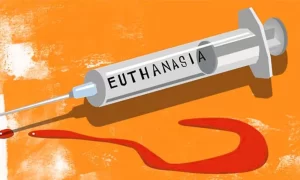If there was an evil villain seeking to wipe out life on earth, they would curse and remove all the symbiosis on earth – without symbiotic relationships, we would all be extinct forever.
Symbiosis is the relationship between two organisms, some of these are positive and some negative, but above all, these relationships are what allow us to survive together on a single earth.
Imagine you are diving into the ocean, exploring the world beneath the waves. If we see a clownfish swimming near a sea anemone, we’ve just witnessed the harmony we were looking for — mutualism: one of the four types of symbiosis. In a mutualistic relationship, both species benefit. In this case,the sea anemone provides the clownfish with protection and shelter, while the clownfish provides the anemone nutrients in the form of waste, while also scaring off predator fish with their poisonous tentacles.
Let’s continue our journey by swinging on the vines in the wilderness of a dense overgrown jungle. Here, you find the fresh fruits and the tropical trees. But among all, you find the second type of symbiosis – commensalism. Birds like cattle egrets or oxpeckers often perch on the backs of grazing animals, such as elephants, buffaloes, or zebras. Commensalism is where one animal is benefited, while the other remains unaffected. In this case, these birds feed on the insects that infest the mammals’ fur or skin, gaining a reliable food source. Meanwhile, the mammals remain unaffected.
Envision yourself playing football, just then a mosquito proceeds to bite you. However annoying, this interaction is known as parasitism, the third type of symbiotic relationship. Parasitism is where one organism is benefited while the other is harmed. It consists of the host, which is disadvantaged and the parasite that is the beneficiary. This can be spotted frequently in our daily life. For instance, humans getting bitten by mosquitoes. When a female mosquito bites a human, it pierces the skin and injects its saliva. The mosquito then feeds on the blood that flows into its mouth. In this case, the human is the host and the mosquito is the parasite. Although this may seem annoying in our perspective, this is still a type of harmonic relationship. The mosquito needs the blood from humans to reproduce, as they are an important part of the ecosystem, and are the diet of many animals that require insects to live.
Before our voyage around the world is coming to an end, imagine you were running through the thick bushes of the forest, when sweat pours down your cheeks – the thick trees blocking sunlight may prevent further sweating and make you feel cooler, however this negatively affects the growth and development of smaller plants and seedlings beneath the canopy. These plants may struggle to flourish and grow because of the lack of sunlight. This is called amensalism. This is where one organism is disadvantaged, while the other stays unaffected. In this scenario, the large trees are not directly affected by the smaller plants, but the smaller plants are negatively impacted by the shade created by the larger trees.
“How sweet the moonlight sleeps upon this bank! Here we will sit and let the sounds of music creep in our ears: soft stillness and the night becoming the touches of sweet harmony” said Lorenzo to Jessica suggesting that they should enjoy the enchanting ambiance created by the combination of moonlight, music, stillness, and harmony, from “The Merchant of Venice” written by shakespeare. Of course, harmony and symbiosis is all around us. From “The Merchant of Venice” in the 16th century, to the current earth era, the Cenozoic Era in the 21st century, it’s one of those things that eventually blend into life like an extremely monotone background music at a high school prom. But if you look at life through a magnifying glass, you’ll truly realise that symbiosis is all around us.
Bibliography
National Geographic Society. “Symbiosis: The Art of Living Together | National Geographic Society.” Education.nationalgeographic.org, National Geographic, 31 Oct. 2022, education.nationalgeographic.org/resource/symbiosis-art-living-together/.
The Editors of Encyclopedia Britannica. “Commensalism | Definition, Examples, & Facts.” Encyclopædia Britannica, 27 Dec. 2017, www.britannica.com/science/commensalism.
—. “Mutualism | Types, Examples, & Facts.” Encyclopædia Britannica, 24 Aug. 2018, www.britannica.com/science/mutualism-biology.
—. “Symbiosis | Biology.” Encyclopædia Britannica, 2 July 2018, www.britannica.com/science/symbiosis.
Study.com, 2022, study.com/learn/lesson/symbiosis-types-examples.html.









Be First to Comment